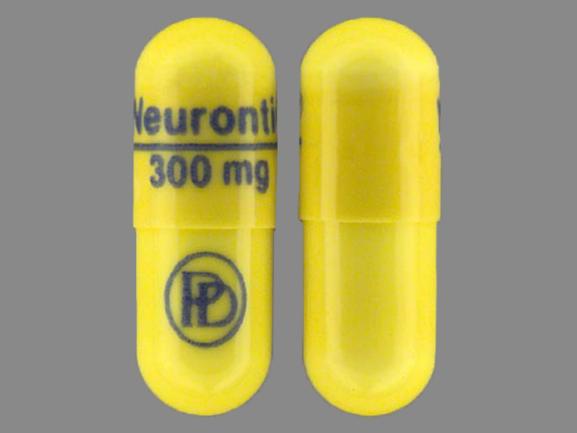Neurontin Disease Interactions
There are 4 disease interactions with Neurontin (gabapentin).
Anxiolytics/sedatives/hypnotics (applies to Neurontin) drug dependence
Major Potential Hazard, Moderate plausibility. Applicable conditions: Drug Abuse/Dependence
Anxiolytic, sedative, and hypnotic agents have the potential to cause dependence and abuse. Tolerance as well as physical and psychological dependence can develop, particularly after prolonged use of excessive dosages, and abrupt cessation and/or a reduction in dosage may precipitate withdrawal symptoms. In patients who have developed tolerance, overdosage can still produce respiratory depression and death. Therapy with anxiolytic, sedative, and hypnotic agents should be administered cautiously and for as brief a period as possible. Addiction-prone individuals, such as those with a history of alcohol or substance abuse, should be under careful surveillance or medical supervision when treated with these agents. In addition, it may be prudent to refrain from dispensing large quantities of medication to such patients. After prolonged use or if dependency is suspected, withdrawal of medication should be undertaken gradually using a dosage-tapering schedule.
References
- Cavallaro R, Regazzetti MG, Covelli G, Smeraldi E "Tolerance and withdrawal with zolpidem." Lancet 342 (1993): 374-5
- "Product Information. Ambien (zolpidem)." sanofi-aventis PROD (2001):
- Gericke CA, Ludolph AC "Chronic abuse of zolpidem." JAMA 272 (1994): 1721-2
- "Product Information. Placidyl (ethchlorvynol)." Abbott Pharmaceutical PROD (2001):
- "Product Information. Aquachloral Supprettes (chloral hydrate)." Medisca Inc PROD (2001):
- "Product Information. Equanil (meprobamate)." Wallace Laboratories PROD (2001):
- "Product Information. Sonata (zaleplon)." Wyeth-Ayerst Laboratories PROD (2001):
Gabapentin (applies to Neurontin) renal dysfunction
Major Potential Hazard, High plausibility.
Gabapentin is primarily eliminated unchanged by the kidney. Therapy with gabapentin should be administered cautiously in patients with impaired renal function. Dosage adjustments and titration should be made in accordance with product package labeling and individual patient response.
References
- Vollmer KO, von Hodenberg A, Kolle EU "Pharmacokinetics and metabolism of gabapentin in rat, dog and man." Arzneimittelforschung 36 (1986): 830-9
- "Product Information. Neurontin (gabapentin)." Parke-Davis PROD (2001):
- Mclean MJ "Clinical pharmacokinetics of gabapentin." Neurology 44 (1994): 17-22
- Blum RA, Comstock TJ, Sica DA, Schultz RW, Keller E, Reetze P, Bockbrader H, Tuerck D, Busch JA, Reece PA, et al. "Pharmacokinetics of gabapentin in subjects with various degrees of renal function." Clin Pharmacol Ther 56 (1994): 154-9
Antiepileptics (applies to Neurontin) suicidal tendency
Moderate Potential Hazard, Moderate plausibility. Applicable conditions: Depression, Psychosis
Antiepileptic drugs (AEDs) have been associated with an increased risk of suicidal thoughts or behavior in patients taking these drugs for any indication. Pooled analyses of 199 placebo-controlled clinical studies involving the use of 11 different AEDs showed that patients receiving AEDs had approximately twice the risk of suicidal thinking or behavior compared to patients receiving placebo. AEDs should be administered cautiously in patients with depression or other psychiatric disorders; phentermine-topiramate should be avoided in patients with history of suicidal attempts or active suicidal ideation. The risk of suicidal thoughts and behavior should be carefully assessed against the risk of untreated illness, bearing in mind that epilepsy and many other conditions for which AEDs are prescribed are themselves associated with morbidity and mortality and an increased risk of suicidal thoughts and behavior. Patients, caregivers, and families should be alert to the emergence or worsening of signs and symptoms of depression, any unusual changes in mood or behavior, or the emergence of suicidal thoughts or behavior. If patients have symptoms of suicidal ideation or behavior, a dosage reduction or treatment discontinuation should be considered.
References
- "Product Information. Tegretol (carbamazepine)." Novartis Pharmaceuticals PROD (2002):
- "Product Information. Klonopin (clonazepam)." Roche Laboratories PROD (2001):
- "Product Information. Dilantin (phenytoin)." Parke-Davis PROD (2001):
- "Product Information. Cerebyx (fosphenytoin)." Parke-Davis PROD (2001):
- "Product Information. Mysoline (primidone)." Elan Pharmaceuticals PROD (2001):
- "Product Information. Lyrica (pregabalin)." Pfizer U.S. Pharmaceuticals Group (2005):
- "Product Information. Sabril (vigabatrin)." Lundbeck Inc (2009):
- "Product Information. Potiga (ezogabine)." GlaxoSmithKline (2011):
- "Product Information. Fycompa (perampanel)." Eisai Inc (2012):
- "Product Information. Briviact (brivaracetam)." UCB Pharma Inc (2016):
- "Product Information. Epidiolex (cannabidiol)." Greenwich Biosciences LLC (2018):
- "Product Information. Xcopri (cenobamate)." SK Life Science, Inc. (2020):
- "Product Information. Fintepla (fenfluramine)." Zogenix, Inc (2020):
- "Product Information. Ztalmy (ganaxolone)." Marinus Pharmaceuticals, Inc (2022):
- "Product Information. Diacomit (stiripentol)." Biocodex USA SUPPL-3 (2022):
- "Product Information. Qsymia (phentermine-topiramate)." Vivus Inc SUPPL-23 (2023):
- "Product Information. Topamax (topiramate)." Janssen Pharmaceuticals SUPPL-65 (2023):
Gabapentin (applies to Neurontin) hemodialysis
Moderate Potential Hazard, High plausibility.
Gabapentin is removed by hemodialysis and should be administered after dialysis.
References
- "Product Information. Neurontin (gabapentin)." Parke-Davis PROD (2001):
- Wong MO, Eldon MA, Keane WF, Turck D, Bockbrader HN, Underwood BA, Sedman AJ, Halstenson CE "Disposition of gabapentin in anuric subjects on hemodialysis." J Clin Pharmacol 35 (1995): 622-6
Neurontin drug interactions
There are 269 drug interactions with Neurontin (gabapentin).
Neurontin alcohol/food interactions
There is 1 alcohol/food interaction with Neurontin (gabapentin).
More about Neurontin (gabapentin)
- Neurontin consumer information
- Check interactions
- Compare alternatives
- Pricing & coupons
- Reviews (194)
- Drug images
- Latest FDA alerts (4)
- Side effects
- Dosage information
- Patient tips
- During pregnancy
- Generic availability
- Support group
- Drug class: gamma-aminobutyric acid analogs
- Breastfeeding
- En español
Related treatment guides
Drug Interaction Classification
| Highly clinically significant. Avoid combinations; the risk of the interaction outweighs the benefit. | |
| Moderately clinically significant. Usually avoid combinations; use it only under special circumstances. | |
| Minimally clinically significant. Minimize risk; assess risk and consider an alternative drug, take steps to circumvent the interaction risk and/or institute a monitoring plan. | |
| No interaction information available. |
Further information
Always consult your healthcare provider to ensure the information displayed on this page applies to your personal circumstances.


